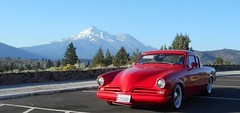I have a '52 2R10 truck that I am building. I am NOT trying to go original. I am making it a daily driver, round town shop truck. It has a later V8 in it and will have a custom flat/stakebed, so nothing stock really. Originality is not important to me.
I have found a few Universal wiring kits with all of the wires and fuse blocks and connectors for very reasonable prices. The wires are all labeled full length what they are for, i.e. left turnsignal printed all of the way along the wire.
Has anyone used one of these kits?
What issues can I expect?
How many circuits do I need to order, they come in 14-22 circuits, for an average truck?
I am not going to run any FI or anything fancy, maybe a decent stereo {hidden of course} and possibly A/C later but other than that nothing over stock not even turnsignals probably, well maybe but it didnt come with them so I may not.
I have found a few Universal wiring kits with all of the wires and fuse blocks and connectors for very reasonable prices. The wires are all labeled full length what they are for, i.e. left turnsignal printed all of the way along the wire.
Has anyone used one of these kits?
What issues can I expect?
How many circuits do I need to order, they come in 14-22 circuits, for an average truck?
I am not going to run any FI or anything fancy, maybe a decent stereo {hidden of course} and possibly A/C later but other than that nothing over stock not even turnsignals probably, well maybe but it didnt come with them so I may not.








Comment